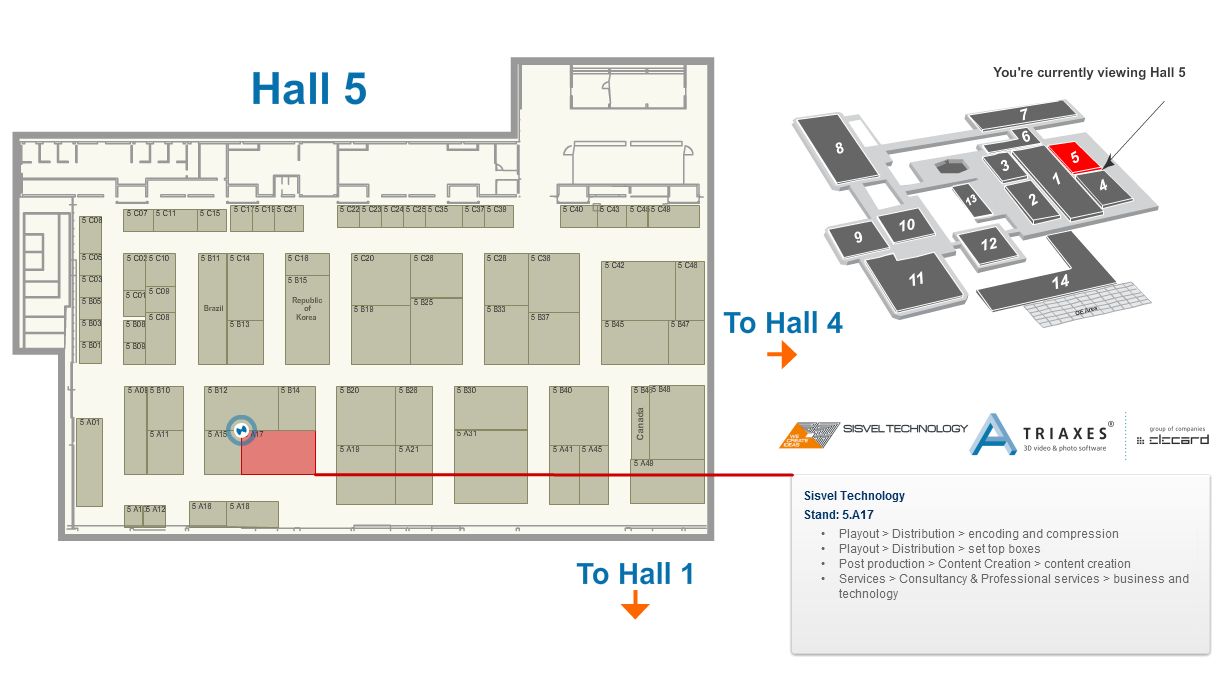New universal 3D video format to be announced at IBC-2012, 7-11 Sept. Amsterdam.
Triaxes together with Sisvel Technology (Italy) is eager to introduce the newest innovatory Universal 3DZ Tile format that is expected to be a breakthrough in 3D TV broadcasting.
3DZ Tile format provides great 3D image quality and is highly compatible with all sorts of displays (2D displays, glasses 3D and glasses-free 3D displays), which makes it genuinely universal.
Jonathan Tustain from one of the leading 3D news site 3dfocus.co.uk said: “I am delighted that, finally, technology is catching up with the expectations of the industry and this announcement from Triaxes Vision and Sisvel Technology is great news for viewers and content makers. Sisvel’s 3D Tile format solves the resolution problem of the side-by-side format and the Triaxes Vision DepthGate solution is the best stereo to autostereo solution we have seen. This is the perfect marriage and I would urge broadcasters to investigate the 3DZ Tile format which can offer viewers a superior viewing experience without major change to their infrastructures”.
Find out more on 3D focus portal
Brief history remark
Earlier Sisvel Technology introduced a unique 3D Tile format enabling to get greater 3D image quality compared to conventional Side-by-Side 3D TV format. Moreover it was also compatible with 2D displays.
Triaxes Vision company added additional information to the Sisvel 3D Tile format, the so called depth map (Z), which contains image volume data. This information greatly enhances the compatibility characteristics of the format.
Thanks to the close collaboration between Triaxes and Sisvel Technology the ability to make video in 3DZ Tile format is now available with Triaxes DepthGate software.
Features and benefits of the new format will be demonstrated at IBC-2012, 7-11 Sept. Amsterdam RAI.
Booth No. 5.A17, Hall 5. Welcome!









Bad idea.
For stereoscopic 3D, the total pixel density of the 3D image is less than using side-by-side, hence resolution is actually LOWER with this “universal 3DZ Tile” format. Even if, as the developers suggest (and I agree about that btw), horizontal resolution is more important than vertical resolution, then you’re better off using upper-lower format, and use all 1920 pixels of the horizontal axis.But my main concern is that a part of the pixels is traded away for useless Z (depth) information.
For autostereoscopic 3D, people strange enough keep on believing that a 2D image plus a Z (depth) buffer is sufficient. Well, if you don’t know better, it might be “ok”. But I don’t believe that “ok” ever was a great seller, right? Philips started with 2D+Z many years ago and they also had to admit that it was very limited, especially because the missing pixels when calculating different views (AS3D is merely ‘multiview’ meaning that such a system requires a >5 number of viewing angles/perpectives/views or whatever you like to call it). Basically, when using 2D + Z, you will end up with A LOT of artifacts, the errors will increase as you increase 3D effect, which means you will have to find some balance, hence make concessions/trade-offs between 3D and quality. This doesn’t make it really useful, because everyone needs quality and you don’t want all kinds of disturbances through your image, to do that, you will have to minimize the 3D effect, which basically means you could better just watch the original Full HD 2D version.
In other words, not future proof.
Hi Jean-Pierre, thank you for your comment.
Jean-Pierre, indeed the H resolution is more important for 3D perception and if we’re going to use the only polarized type of glasses 3D I would prefer the upper-lower format (1920×540).
Again you’re right – the overall number of pixels in 3D Tile is less than in side-by-side by 11% but the H resolution is higher by 33%. This additional resolution is quite noticeable within the computer analysis of disparity and I have no doubt that human eyes also percept better 3D with higher H resolution.
In more details this subject is discussed here: http://www.sisveltechnology.com/files/3Dresolutionevaluation.pdf
Moreover, I would also like to draw your attention to the fact that 3D Tile format is easy backward compatible with 2D TVs.
2D picture is stored in 3DZT in a normal aspect ratio and in original resolution of 720p. The image upscaled to 2D 1080p HD from full 720p is better than from side-by-side or upper-lower (as far as fewer interpolation steps are required).
One more advantage of 3D Tile format is that it could be easily converted into 720p50 3D HDMI 1.4 “Frame Packing” format without any scaling.
What about Z – I could say that depth map technology is widely used in 2D to 3D conversion. The quality of 3D rendering based on depth maps is highly depends on the quality of maps and in some cases the difference between ‘original stereo’ and ‘reconstructed stereo’ is not noticeable.
During the IBC-2012 such companies as Dolby and Fraunhofer demonstrated AS3D displays and technologies which use the depth map methods on different stages. Depth map technology has a great potential. Depth is the a natural characteristic of the images, as well as brightness and chrominance.
So 3DZT format is a perfect way to deliver universal 3D video stream using existent standards and equipment.
During the IBC we clearly demonstrated the format advantages. There are some photos from the booth:
https://www.facebook.com/Triaxes/photos